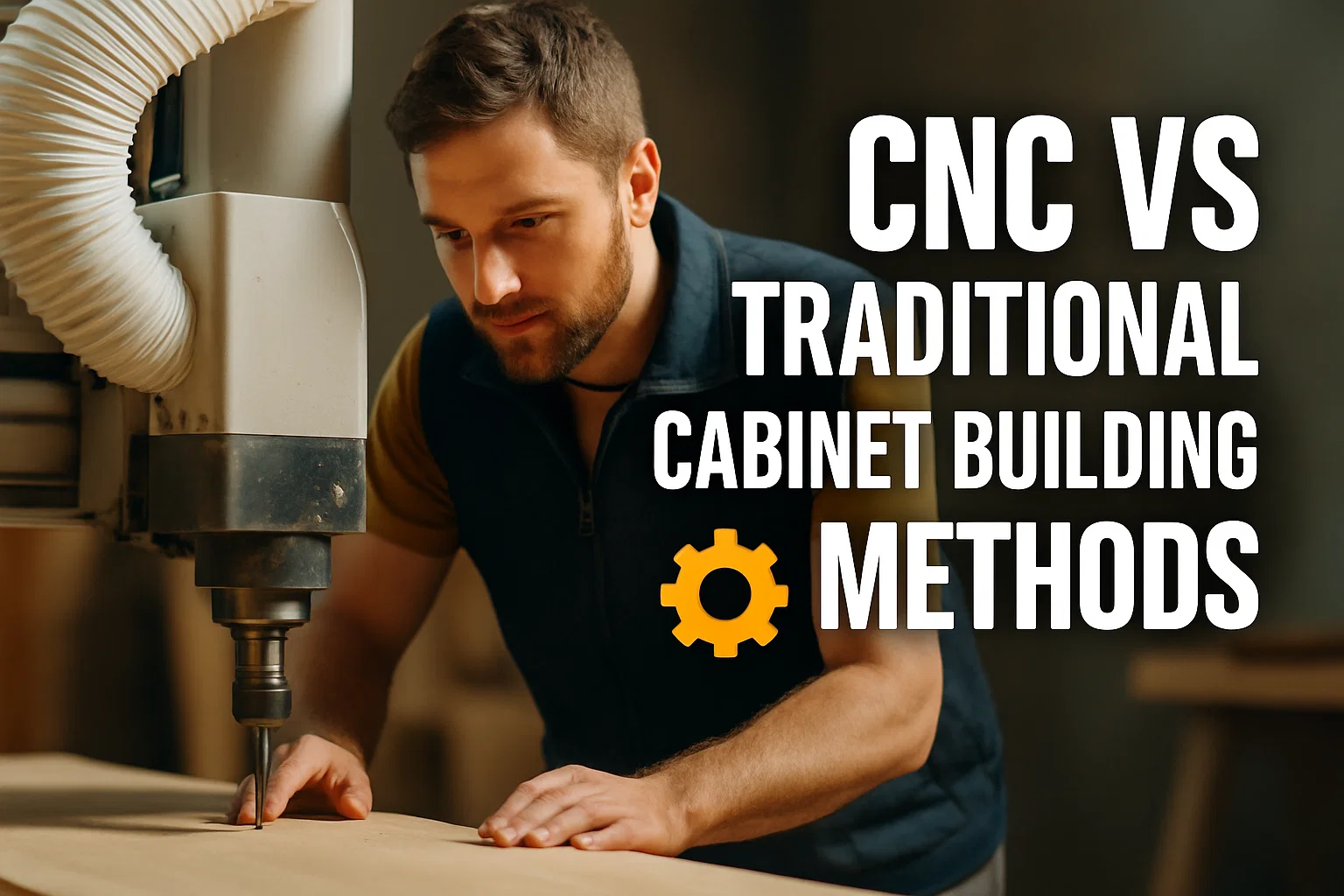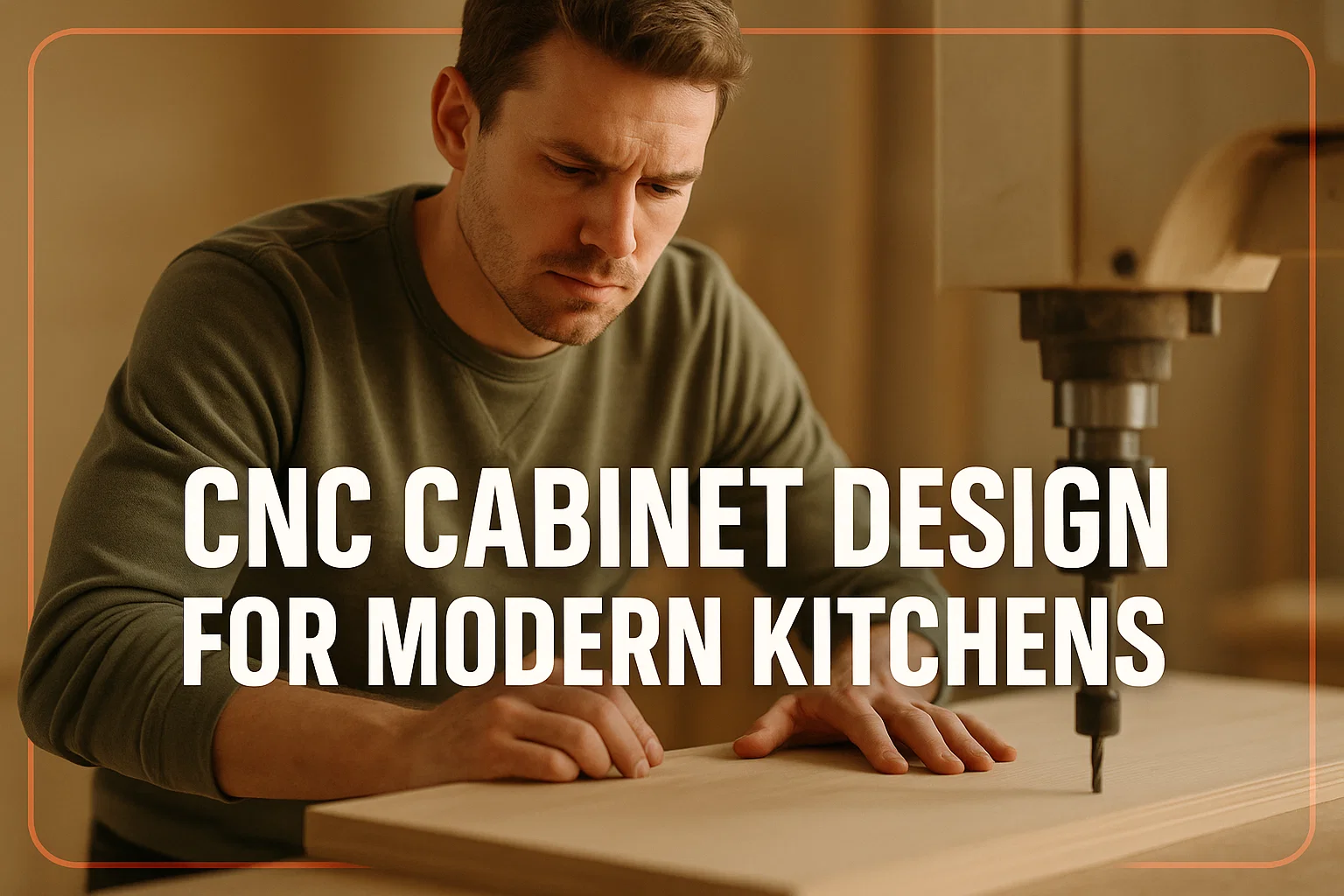The cabinet maker’s art has come a long way from the simple wooden box hammered together in a small shop. From hand tools that have been handed down through generations to powerful computer-controlled machines, how we go about building cabinets strikes a mix of old-fashioned craftsmanship and cutting-edge science.
So why does this centuries-old comparison matter now? Whether you are remodeling your kitchen, designing commercial spaces, or starting your own cabinet-making business, having an understanding of the pros and cons of each method can save you a lot of time, cost, and frustration. At its heart, this is a discussion about innovation versus craftsmanship, two pressing forces in modern woodworking. This blog draws a comparison between CNC and traditional cabinet-building methods and which approach may be the right one for your next project.
Understanding of the CNC & Traditional Method
What Is CNC Cabinet Making
CNC is short for Computer Numerical Control, which is a system of using mini-computers, code, and devices to cut, shape, and drill customized projects. Instead of being manually measured and cut, CNC machines read digital instructions to create precise parts time and time again.
Here’s how it works in cabinet making:
- CAD Software Design: A designer draws cabinet plans using a computer-aided design (CAD) software program.
- Digital Conversion: The plans get translated into code that instructs the CNC machine on how to wiggle.
- Assembly Line: The drilling, cutting, and shaping are all done automatically.
This is changing the business by creating a model that enables the consistent delivery of high-quality cabinetry on a large scale.
Benefits of CNC Cabinet Making
- Precision and Consistency: CNC machines can cut to tolerances measured in fractions of a millimeter and each part fits just-so. This minimize errors on assembly and delivers better final product quality.
- Speed and Scalability: Once a design is chosen, the machine then quickly churns out dozens, or even hundreds of identical parts, making it useful for bulk orders or large commercial operations.
- Number of Shapes with CAD Patterns: Its sophistication or it’s ability to interfere, and its beautiful Its precision, its ability (or habit) of interfering.
- Design Flexibility with CAD Software: Complex patterns, curves and complex junctions become possible with CNC. What would have taken hours of painstaking work by hand can now be done with a few clicks and a clever machine.
Common CNC Cabinet Applications
- Contemporary Kitchens: Smooth curves and continuous surfacing goes hand in hand with CNC manufacturing.
- Custom Commercial Cabinetry: Offices, retail, and restaurant work can all utilize consistent, reproducible parts.
- RTA (Ready-To-Assemble) Cabinetry Manufacturing: A lot of the RTA cabinets you purchase at retail are manufactured on CNC equipment.
What is Traditional Cabinet Construction

Traditional cabinet making is done by manual tools and techniques. Before CNC, cabinet makers were entirely dependent on manual tools, many still are.
These include:
- Table saws and routers
- Chisels and hand planes
- Dovetail jigs and clamps
Making cabinets this way calls for great skill and enormous patience, since each piece is measured, cut and shaped by hand.
Benefits of Traditional Cabinet Building
- Craftsmanship and Uniqueness: Every cabinet is hand crafted for the artisan touch. Slight grain, joinery, and finish irregularities are to be expected and are part of the characteristics, making each piece unique.
- Hands-On Quality Control: Experienced cabinet craftsmen can accommodate and execute every clue while working with you, and the added cabinet costs often go on service, design and fine craftsmanship.
- Perfect for Heritage or Rustic Theme: If you are remodeling or building a home and want a traditional look old time approach embrace the warmth and romance of traditional woodworking.
Where Traditional Methods Shine
- Custom, Luxurious, or Vintage-Style Cabinetry: There’s no matching the personality of handmade kitchen cabinets in a historic home.
- Luxury Residential: Affluent homeowners sometimes select traditional craftsmanship because of the quality and prestige it offers.
CNC vs Traditional Cabinet Building Methods
To help you make that decision, here’s a side-by-side comparison of the pros and cons of each method:
| Feature | CNC Method | Traditional Method |
| Speed | Fast | Slower |
| Precision | High | Depends on skill |
| Labor | Low | High |
| Design Flexibility | CAD-based | Limited by tools |
| Cost | Medium-High Initial | Varies (High Labor) |
| Customization | Digital + Custom | Fully Custom by Hand |
Choosing the Right Method for Your Project
When to Choose CNC Cabinets
CNC cabinets make sense when:
- You need production: Tight deadlines or big orders favor CNC’s speed.
- For creating modern and minimalist spaces: clean lines and modern styles are the focus of CNC.
- For the most cost-effective solution: The marginal cost per additional unit is less once you have invested the fixed amount of the building.
When to Choose Traditional Cabinets
Traditional methods are ideal when:
- You want handcrafted uniqueness: Each cabinet varies slightly from all the others.
- You’re restoring or renovating a classic space: If you’re working on a space laden with history, it’s important to use pieces with authentic joinery and finishes.
- You value top-notch craftsmanship: Handmade cabinets can become beloved heirlooms.
What Custom Cabinet TX Does for You
At Custom Cabinet TX, we’re a company that believes tradition and technology combine to deliver quality cabinetry. That’s why we offer:
- CNC Design and Manufacture: Ideal for contemporary kitchens, commercial use and flat pack furniture.
- Old-World Cabinet Making: Old-fashioned handmade cabinets with an old-world vibe and attention to detail.
- Custom: Digital exact or artisan handmade? We can accommodate your cabinet dreams.
Check out our Custom Cabinets, CNC Design, and Installation to see how we adhere to your dreams. With 10 experience and a growing number of prestigious awards, you can rely on us to provide the quality you’ll love.
Final Thoughts
Deciding between CNC and traditional cabinet building is not about choosing the best one. It certainly is not trying to settle some ancient rivalry or anything. It’s about making the decision that makes sense for your project, your budget, and your style. CNC can mean speed, consistency, and contemporary designs, while traditional craftsmanship means warmth, individual character, and heritage.
If you want assistance deciding on the best approach for your home or business, contact us at Custom Cabinet TX, We are always here to help.



